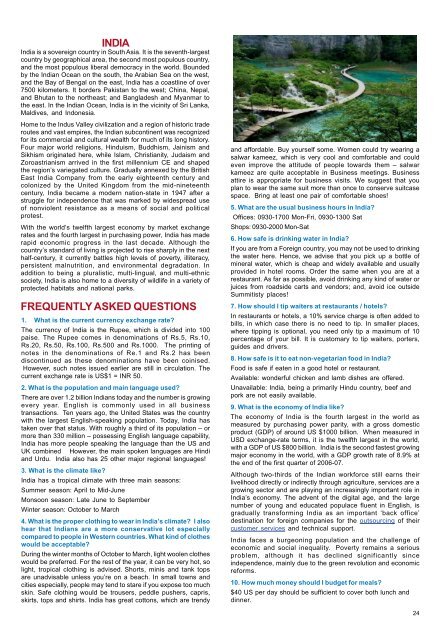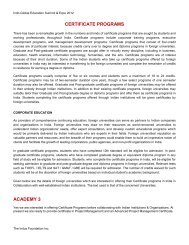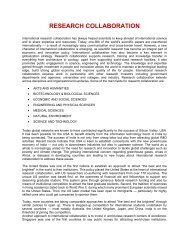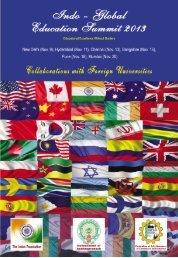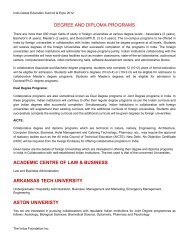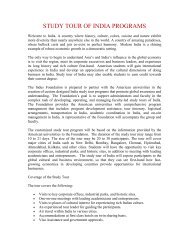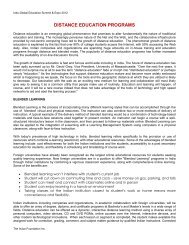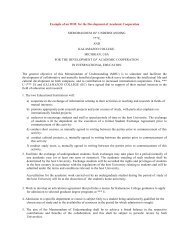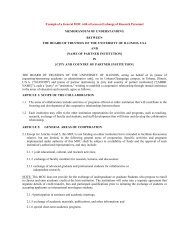Indo-Global Education Summit 2013 - The Indus Foundation
Indo-Global Education Summit 2013 - The Indus Foundation
Indo-Global Education Summit 2013 - The Indus Foundation
Create successful ePaper yourself
Turn your PDF publications into a flip-book with our unique Google optimized e-Paper software.
INDIA<br />
India is a sovereign country in South Asia. It is the seventh-largest<br />
country by geographical area, the second most populous country,<br />
and the most populous liberal democracy in the world. Bounded<br />
by the Indian Ocean on the south, the Arabian Sea on the west,<br />
and the Bay of Bengal on the east, India has a coastline of over<br />
7500 kilometers. It borders Pakistan to the west; China, Nepal,<br />
and Bhutan to the northeast; and Bangladesh and Myanmar to<br />
the east. In the Indian Ocean, India is in the vicinity of Sri Lanka,<br />
Maldives, and <strong>Indo</strong>nesia.<br />
Home to the <strong>Indus</strong> Valley civilization and a region of historic trade<br />
routes and vast empires, the Indian subcontinent was recognized<br />
for its commercial and cultural wealth for much of its long history.<br />
Four major world religions, Hinduism, Buddhism, Jainism and<br />
Sikhism originated here, while Islam, Christianity, Judaism and<br />
Zoroastrianism arrived in the first millennium CE and shaped<br />
the region’s variegated culture. Gradually annexed by the British<br />
East India Company from the early eighteenth century and<br />
colonized by the United Kingdom from the mid-nineteenth<br />
century, India became a modern nation-state in 1947 after a<br />
struggle for independence that was marked by widespread use<br />
of nonviolent resistance as a means of social and political<br />
protest.<br />
With the world’s twelfth largest economy by market exchange<br />
rates and the fourth largest in purchasing power, India has made<br />
rapid economic progress in the last decade. Although the<br />
country’s standard of living is projected to rise sharply in the next<br />
half-century, it currently battles high levels of poverty, illiteracy,<br />
persistent malnutrition, and environmental degradation. In<br />
addition to being a pluralistic, multi-lingual, and multi-ethnic<br />
society, India is also home to a diversity of wildlife in a variety of<br />
protected habitats and national parks.<br />
FREQUENTLY ASKED QUESTIONS<br />
1. What is the current currency exchange rate<br />
<strong>The</strong> currency of India is the Rupee, which is divided into 100<br />
paise. <strong>The</strong> Rupee comes in denominations of Rs.5, Rs.10,<br />
Rs.20, Rs.50, Rs.100, Rs.500 and Rs.1000. <strong>The</strong> printing of<br />
notes in the denominations of Re.1 and Rs.2 has been<br />
discontinued as these denominations have been coinised.<br />
However, such notes issued earlier are still in circulation. <strong>The</strong><br />
current exchange rate is US$1 = INR 50.<br />
2. What is the population and main language used<br />
<strong>The</strong>re are over 1.2 billion Indians today and the number is growing<br />
every year. English is commonly used in all business<br />
transactions. Ten years ago, the United States was the country<br />
with the largest English-speaking population. Today, India has<br />
taken over that status. With roughly a third of its population – or<br />
more than 330 million – possessing English language capability,<br />
India has more people speaking the language than the US and<br />
UK combined However, the main spoken languages are Hindi<br />
and Urdu. India also has 25 other major regional languages!<br />
3. What is the climate like<br />
India has a tropical climate with three main seasons:<br />
Summer season: April to Mid-June<br />
Monsoon season: Late June to September<br />
Winter season: October to March<br />
4. What is the proper clothing to wear in India’s climate I also<br />
hear that Indians are a more conservative lot especially<br />
compared to people in Western countries. What kind of clothes<br />
would be acceptable<br />
During the winter months of October to March, light woolen clothes<br />
would be preferred. For the rest of the year, it can be very hot, so<br />
light, tropical clothing is advised. Shorts, minis and tank tops<br />
are unadvisable unless you’re on a beach. In small towns and<br />
cities especially, people may tend to stare if you expose too much<br />
skin. Safe clothing would be trousers, peddle pushers, capris,<br />
skirts, tops and shirts. India has great cottons, which are trendy<br />
and affordable. Buy yourself some. Women could try wearing a<br />
salwar kameez, which is very cool and comfortable and could<br />
even improve the attitude of people towards them – salwar<br />
kameez are quite acceptable in Business meetings. Business<br />
attire is appropriate for business visits. We suggest that you<br />
plan to wear the same suit more than once to conserve suitcase<br />
space. Bring at least one pair of comfortable shoes!<br />
5. What are the usual business hours in India<br />
Offices: 0930-1700 Mon-Fri, 0930-1300 Sat<br />
Shops: 0930-2000 Mon-Sat<br />
6. How safe is drinking water in India<br />
If you are from a Foreign country, you may not be used to drinking<br />
the water here. Hence, we advise that you pick up a bottle of<br />
mineral water, which is cheap and widely available and usually<br />
provided in hotel rooms. Order the same when you are at a<br />
restaurant. As far as possible, avoid drinking any kind of water or<br />
juices from roadside carts and vendors; and, avoid ice outside<br />
<strong>Summit</strong>isty places!<br />
7. How should I tip waiters at restaurants / hotels<br />
In restaurants or hotels, a 10% service charge is often added to<br />
bills, in which case there is no need to tip. In smaller places,<br />
where tipping is optional, you need only tip a maximum of 10<br />
percentage of your bill. It is customary to tip waiters, porters,<br />
guides and drivers.<br />
8. How safe is it to eat non-vegetarian food in India<br />
Food is safe if eaten in a good hotel or restaurant.<br />
Available: wonderful chicken and lamb dishes are offered.<br />
Unavailable: India, being a primarily Hindu country, beef and<br />
pork are not easily available.<br />
9. What is the economy of India like<br />
<strong>The</strong> economy of India is the fourth largest in the world as<br />
measured by purchasing power parity, with a gross domestic<br />
product (GDP) of around US $1000 billion. When measured in<br />
USD exchange-rate terms, it is the twelfth largest in the world,<br />
with a GDP of US $800 billion. India is the second fastest growing<br />
major economy in the world, with a GDP growth rate of 8.9% at<br />
the end of the first quarter of 2006-07.<br />
Although two-thirds of the Indian workforce still earns their<br />
livelihood directly or indirectly through agriculture, services are a<br />
growing sector and are playing an increasingly important role in<br />
India’s economy. <strong>The</strong> advent of the digital age, and the large<br />
number of young and educated populace fluent in English, is<br />
gradually transforming India as an important ‘back office’<br />
destination for foreign companies for the outsourcing of their<br />
customer services and technical support.<br />
India faces a burgeoning population and the challenge of<br />
economic and social inequality. Poverty remains a serious<br />
problem, although it has declined significantly since<br />
independence, mainly due to the green revolution and economic<br />
reforms.<br />
10. How much money should I budget for meals<br />
$40 US per day should be sufficient to cover both lunch and<br />
dinner.<br />
24


